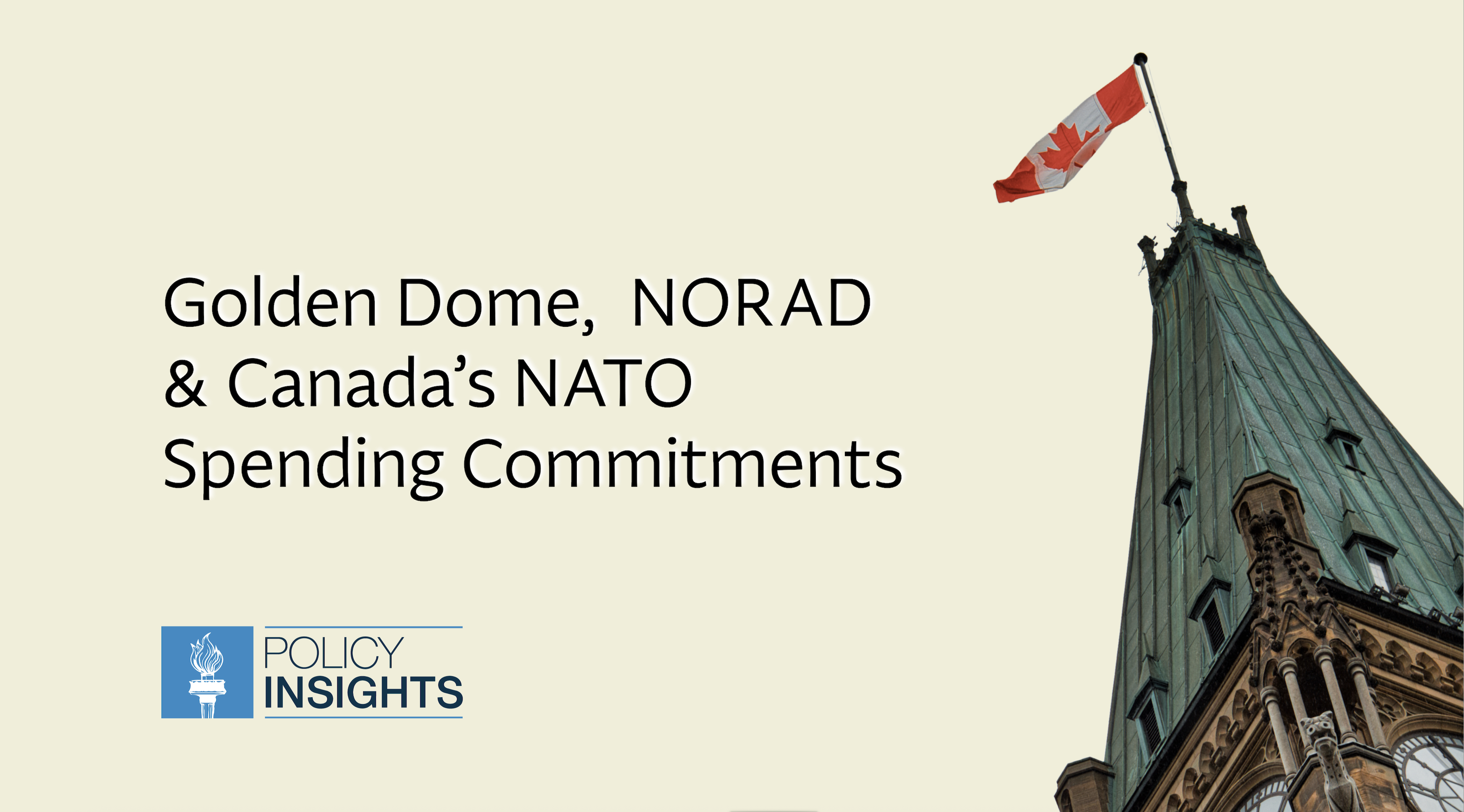






President Trump’s announcement of the “Golden Dome” missile defence system marks a significant shift in how the United States envisions North American security. Rather than enhancing the existing North American Aerospace Defense Command (NORAD), Trump’s vision integrates it into a U.S.-led continental shield designed to connect North America with allied nodes in Japan and Greenland.
Supporters describe the Golden Dome as a “generational leap forward in homeland protection”, leveraging AI-enabled command and control, space-based sensors, and hypersonic interceptors. Critics argue it may dilute Canada’s role within NORAD, reducing its sovereignty in command decisions and embedding continental defence within a unilateral U.S. framework. As one Washington observer noted, “Golden Dome is as much about politics and branding as it is about deterrence.”
NORAD, established in 1958 through a formal binational treaty, remains a unique defence arrangement where Canadian officers hold command authority alongside their U.S. counterparts. Dissolving NORAD would require renegotiating or terminating this treaty—an unlikely move without Canada’s consent.
Golden Dome does not formally eliminate NORAD, but by repositioning it as one operational layer of a broader U.S.-dominated missile defence system, it could sideline Canada’s voice in strategic decision-making. As a Canadian defence analyst put it, “This is change by integration, not by negotiation.
Canada has committed to reaching NATO’s 2% of GDP defence spending target by the end of 2025, and further pledged to increase spending to 5% by 2035:
These commitments are intended to modernize Canada’s forces, strengthen Arctic monitoring, and improve NATO interoperability. They also align with Europe’s ReArm Europe and Security Action for Europe (SAFE) initiatives, where Canada is playing a growing role in defence supply chains and infrastructure development.
The interaction between Golden Dome and Canada’s NATO spending trajectory represents a strategic fork in the road for Canadian defence and foreign policy.
Golden Dome centralizes decision-making in Washington, contrasting with NORAD’s binational governance model that guarantees Canada an equal voice. Canada’s NATO commitments, in contrast, embed it deeper into multilateral European defence structures, where influence is shared among 31 member states.
Golden Dome procurement is expected to flow largely through U.S. defence primes, subject to Buy America provisions. Canadian industry participation, historically supported under NORAD modernization, may become conditional or limited. Meanwhile, Canada’s NATO-driven spending opens new industrial channels—particularly in Arctic infrastructure, critical minerals, AI, and dual-use technologies—with European partners.
Golden Dome is a continental project framed around U.S. Indo-Pacific ambitions. Canada’s NATO commitment, however, aligns with a European security pivot that emphasizes resilience, infrastructure, and global supply chains. Balancing these priorities presents a challenge: how can Canada invest heavily in NATO interoperability, Arctic infrastructure, and European partnerships while simultaneously integrating into an ambitious U.S.-centric missile defence shield?
Golden Dome is closely linked to a single administration and carries a strong political identity. It may face revision or cancellation by future U.S. governments. Canada’s NATO spending pledge, conversely, is multilateral, with timelines stretching to 2035, offering a degree of stability and predictability.
This situation raises a core question: Can Canada effectively pursue three strategic directions at once—deepening integration with the U.S. through Golden Dome, fulfilling NATO’s 5% pledge, and strengthening ties with other allies in Europe and beyond?
Some argue Canada has the resources and diplomatic networks to do so, provided priorities are clearly sequenced and industrial policy is synchronized. Others warn that trying to “do everything everywhere” could overstretch Canadian defence resources and reduce its influence in any single area.
The convergence of the Golden Dome initiative and Canada’s historic NATO spending commitments presents a defining moment for Canadian security policy. Whether Canada chooses to integrate fully into the Golden Dome framework, deepen its European partnerships, or attempt to balance both paths simultaneously will shape its defence identity, industrial base, and diplomatic standing for decades.
As one Canadian policy adviser reflected, “This is more than just a procurement decision—it is a fork in the road for how Canada defines its alliances and its sovereignty in the 21st century.”